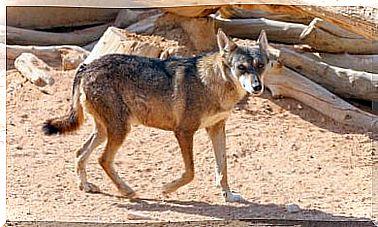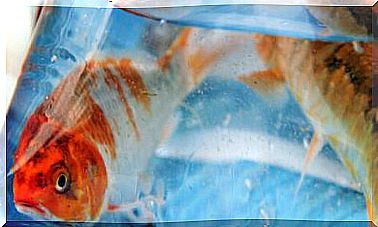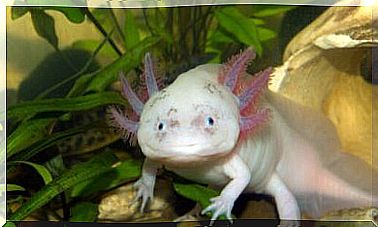Hereditary Diseases In Cats: Which Are The Most Common?

Hereditary diseases are being studied in an attempt to improve the reproduction of many animal species. In dogs, cats, horses or other living beings it is important to recognize them in order to improve the selection of animals to breed and for the conservation of the breeds. Unfortunately, hereditary diseases in genetically selected cats are commonplace.
Currently, about 60 genes are known in which mutations responsible for certain diseases affecting cats have been found. In addition, more than 300 hereditary diseases in cats have been identified, many of them similar to diseases found in humans. Today we are going to tell you what are the six most common hereditary diseases that affect cats.
The 6 most common hereditary diseases of cats
Advances in understanding the genome of species are making it possible to identify the molecular basis of various inherited diseases. This also applies to domestic cats, which accompany us daily in our lives. Their health is an issue dear to veterinary medicine.
For this reason, genetic analyzes are carried out that allow to identify the presence of hereditary diseases in asymptomatic specimens in order to control and eliminate these pathologies in future generations. Thanks to these techniques, crosses between animals carrying harmful mutations can be avoided.
Unfortunately, some inherited diseases continue to affect cats depending on the breed and their genome. In the following lines, we will tell you which are the six most common inherited diseases that affect cats.
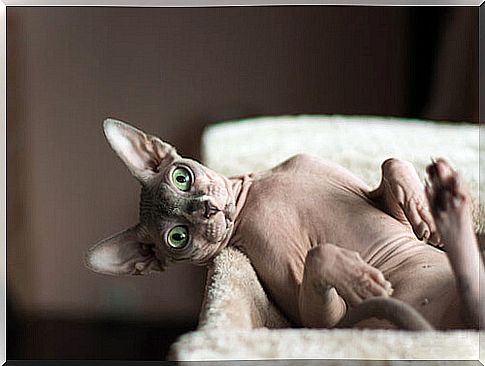
1. Polycystic kidney, the most common of the hereditary diseases of cats
Polycystic kidney is an autosomal dominant inherited disease that affects Persian cats (and their crosses), the sacred cat of Burma, British shorthairs and other cat breeds. Given the number of Persian cats, polycystic kidney is considered one of the most relevant hereditary diseases of cats.
This pathology is characterized by the appearance of small, fluid-filled kidney cysts that can be detected with ultrasound. Over time, the cysts grow and multiply compromising kidney function and, in an advanced stage, chronic kidney failure.
2. Hypertrophic cardiomyopathy
Hypertrophic cardiomyopathy is the most common heart disease in domestic cats. It is hereditary in cat breeds such as the Maine Coon and the Ragdoll. This pathology is characterized by an increase in the thickness of the wall of the left ventricle.
This cardiomyopathy is caused by a mutation in the gene that codes for heart muscle fiber proteins. The mutation can have varying degrees of severity and, in severe cases, cats can suffer from heart failure.
3. Spinal muscular atrophy, another of the most common hereditary diseases of cats
It is an autosomal recessive disease that occurs early (around 12 weeks of life). The loss of neurons causes atrophy and weakness of the cat’s skeletal muscles.
Symptoms may range from abnormalities in gait and posture to inability to jump and climb, exercise intolerance, sensitivity to back rubbing, and difficulty breathing. Since the disease is not fatal, cats can reach adulthood. However, it is very disabling. Therefore, sick animals need specific care throughout their lives.
4. Progressive retinal atrophy
Cats affected by this condition are born with normal vision. However, changes occur in the retina of their eyes around a year and a half to two years. Rod cells, the cells responsible for detecting movement and allowing night vision and peripheral vision, progressively degenerate. In addition, the photoreceptor cells of the retina are also damaged.
The end result of the degeneration of both photoreceptors is blindness, which can occur between three and five years of the feline’s life. Some of the cat breeds most prone to progressive retinal atrophy are the Abyssinian, Somali, Siamese, Singapura, and Tonkinese.
5. Pyruvate kinase deficiency in erythrocytes
Deficiency of the pyruvate kinase enzyme in erythrocytes causes hereditary haemolytic anemia in Abyssinian, Somali and domestic shorthair cats. It is another of the most common inherited diseases that affect cats.
The body does not have enough healthy red blood cells to supply oxygen to the various tissues in the body. Red blood cells are destroyed earlier than normal causing symptoms such as severe lethargy, diarrhea, pale mucous membranes, loss of appetite and weight loss. This pathology is detected with blood tests.
6. Hereditary diseases in cats: gangliosidosis
Gangliosidosis is an inherited neurodegenerative disease caused by a point mutation in a gene. This pathology was first described in Siamese cats and later in Korat, which derive from this breed.
Neurological symptoms appear around three and a half months of age and manifest with a slight tremor in the head or extremities. As the disease progresses, cats have difficulty walking and in the terminal phase they can become blind and have seizures (around 9-10 months of age).
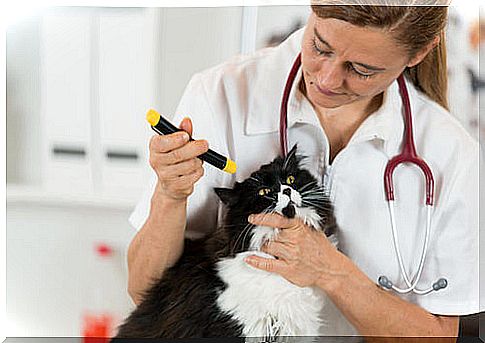
What we have presented to you are the 6 most common hereditary diseases in cats. If you are planning to adopt a cat that belongs to one of the breeds we have mentioned, ask the breeder about the possible pathologies it could develop over time. Also, find out about the genetic tests available on the market to identify the hereditary diseases of your beloved feline.
